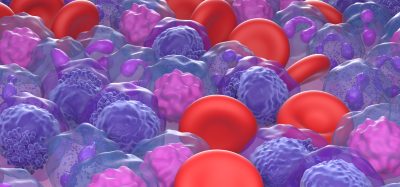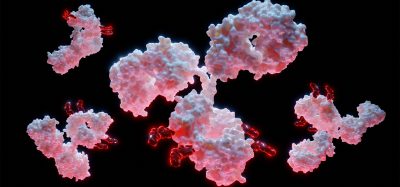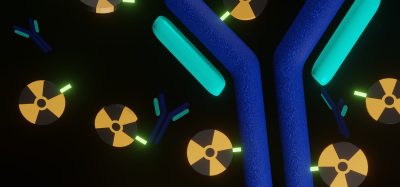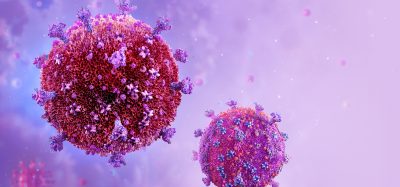Latest developments in COVID-19 research
Posted: 29 December 2022 | Ria Kakkad (Drug Target Review) | No comments yet
As COVID-19 continues to evolve, researchers are still on the lookout for new ways to protect against the virus. Drug Target Review brings you some of the most recent pre-clinical developments.
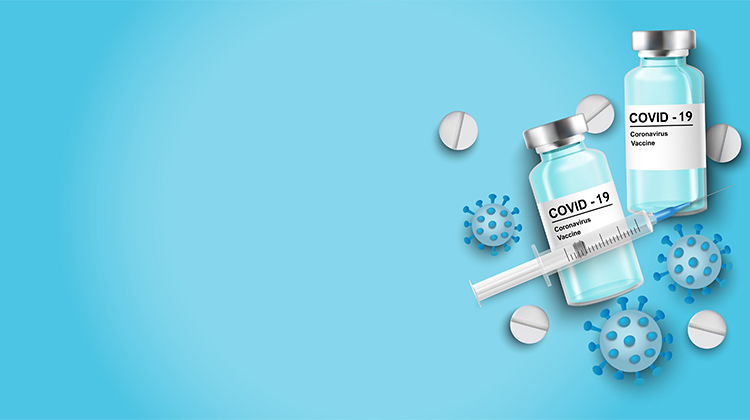
According to the World Health Organization (WHO), COVID-19 has caused over 6 million deaths as of 16 December 2022.
COVID-19 is still a concerning research topic, thus there is a pressing need to develop efficient therapeutics. As COVID-19 continues to evolve, many of the existing vaccines are becoming less effective to contain the virus.
This article shares some of the recent pre-clinical studies highlighting varying effective methods to protect against COVID-19.
Promising proteins to treat COVID-19 infection
A common therapy to treat COVID-19 infection has been the use of monoclonal antibody (mAb) therapeutics. However, the production of these therapies are usually more expensive than small molecule drugs, must be injected rather than taken orally and are often difficult to duplicate1.
Recently, researchers from the Texas A&M University School of Medicine, US, engineered two small broadly neutralising synthetic targeted proteins — FSR16m and FSR22 — that could be administered as a nasal spray to protect against and treat COVID-19. In their paper, which was published in Nature Chemical Biology, the team found the proteins exhibit broad-spectrum neutralisation of SARS-CoV-2 variants, including Beta, Delta and Omicron strains.
The proteins were templated on the designed ankyrin repeat protein (DARPin), a synthetic scaffold inspired by a class of binding proteins commonly found in nature. The researchers created two DARPin molecules that assemble in groups of three and block the interaction between the primary protein used by the COVID-19 virus to enter cells and its partner on host cells, thus stopping the virus in its tracks.
When delivered into the nose of animal models with the COVID-causing virus, the DARPins reduced the amount of virus that accumulate in the airways by up to 100-fold and significantly reduced disease progression.
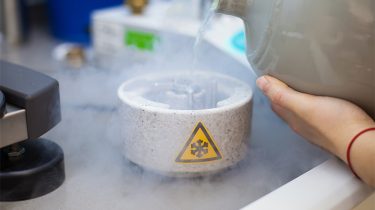
Using cryogenic electron microscopy (cryo-EM) analysis, the researchers were able to assign the broad effectiveness of the DARPins to their engineering design, which resulted in DARPins being able to mimic a key interface on the cellular receptor needed by the virus to enter cells.
Using cryogenic electron microscopy (cryo-EM) analysis, the researchers were able to assign the broad effectiveness of the DARPins to their engineering design, which resulted in DARPins being able to mimic a key interface on the cellular receptor needed by the virus to enter cells.
“This study offers the possibility of an on-demand nasal spray able to tackle COVID either before or after virus exposure,” said Dr Zhilei Chen. The team’s discovery provides another, potentially lower-cost therapeutic option for those who cannot receive traditional vaccines or are considered high risk.
ACE2-based decoy receptors for COVID-19
As COVID-19 continues to grow, existing antibody drugs to treat the virus are losing their effectiveness, as the viral spike protein is mutating to escape being targeted by the antibodies.
Scientists at Dana-Farber Cancer Institute, US, have developed a drug that potently neutralises SARS-CoV-2 and is equally effective against the Omicron variant and every other tested variant. The drug is designed in such a way that natural selection to maintain infectiousness of the virus should also maintain the drug’s activity against future variants.
The investigational drug, described in Science Advances, is not an antibody, but a related molecule known as an ACE2 receptor decoy. Unlike antibodies, the ACE2 decoy is far more difficult for the SARS-CoV-2 virus to evade because mutations in the virus that would enable it to avoid the drug would also reduce the virus’s ability to infect cells. The scientists found a way to make this type of drug neutralise coronaviruses more potently in animals infected with COVID-19, making it safer to give to patients.
The researchers identified features that make ACE2 decoys especially potent and long-lasting. For example, they found that when they included a piece of the ACE2 protein called the collectrin-like domain, it made the drug stick more tightly to the virus and have a longer life in the body. Their experiments showed that ACE2 decoys have potent activity against the COVID-19 virus because they trigger an irreversible change in the structure of the virus – they “pop” the top off the viral spike protein so it cannot bind to the cell-surface ACE2 receptor and infect cells.
As COVID-19 continues to grow, existing antibody drugs to treat the virus are losing their effectiveness
The SARS-CoV-2 virus is covered with projections called spike proteins that enable the virus to infect cells. The spike protein binds to the ACE2 receptor on the cell surface and then refolds, driving the spike into the cell, enabling the virus to enter. ACE2 decoys lure the virus to bind to the decoy instead of the cell, “popping” the spike and inactivating the virus before it can enter cells. This explains the drug’s surprising potency: not only does it function as a competitive inhibitor, but it permanently inactivates the virus. Since binding to ACE2 is required for infection, variants can change but they must continue to bind to ACE2, making the drug persistently active against all variants.
The researchers say that, in addition to treating antibody-resistant variants of SARS-CoV-2, the drug could be useful to treat new coronaviruses that might emerge in the future to infect humans. This is because many coronaviruses in nature poised to enter the human population also utilise ACE2 to infect cells.
While the drug has not yet been tested in humans, manufacturing development is nearly complete and pre-clinical studies needed for regulatory approval are underway, with the goal of advancing the drug to clinical trials.
Developing COVID-19 variant-resistant vaccines
Latest research findings an international research team led by Associate Professor David Veesler from the University of Washington in Seattle and Howard Hughes Medical Institute, both US, show that vaccine-elicited neutralising antibodies against SARS-CoV-2 are mostly directed against one of the two main domains of the viral entry machinery2,3.
The findings also highlight a key role of the same domain of the spike in eliciting a broad antibody response against many variants, as well as related viruses.
As COVID-19 continues to evolve, many of the existing vaccines are becoming less effective to contain the virus.
Spike proteins, which give the virus its crown-like appearance, provide the means for the virus to enter host cells. One subunit of the spike protein engages with a receptor on the host cell and recognises when a proper landing has occurred.
The spike also adopts a spring-loaded configuration. Its shape changes as it forces the fusion of the virus to the host cell, thereby initiating infection.
The team decided to investigate the specificity of spike protein-directed antibody responses using cryo-EM and other methods. They wanted to assess the relative contribution of the binding site of the antibody to neutralising activity against SARS-COV-2 variants.
Through this, and related work, they wanted to understand the influence of the varying spike protein conformations on blood-plasma antibody neutralising activity. Such information might help in discovering ways to modulate the magnitude and breadth of antibodies against SARS-CoV-2.
The researchers studied plasma samples from individuals who had not been exposed to COVID-19, but who had received the primary series of doses of one of the seven most administered vaccinations worldwide. In addition, they examine samples from subjects who had a history of infection and vaccination. They also looked a convalescent plasma from people who had acquired COVID-19 before January 2021, when vaccination programs started.
As published in Science Immunology, the scientists observed a strong correlation between in vitro virus inhibitory activity of participant plasma and the magnitude of antibody responses against the prefusion form of the spike protein. This was true for all the vaccines evaluated and for antibodies induced by previous infection.
“We observed a comparable positive correlation between antibody neutralising activity and S1 binding antibody responses, suggesting a key role of S1-directed antibodies for SARS-CoV-2 neutralisation,” the researchers wrote. S1 is the spike protein unit involved in host cell receptor engagement, the first part of the viral attack on a cell.
The researchers also found that neutralising antibody plasma samples also corresponded to the presence of antibodies that specifically targeted two domains on the S1 spike protein unit. Earlier studies had suggested that those two domains, named NTD and RBD, were the main targets of neutralising antibody responses during an infection or after vaccination.
These NTD and RBD-directed host antibodies may also, in part, account for evolutionary selective pressure on those parts of the virus. This selective pressure may have led to a rapid accumulation of mutations in variants to try to outwit this immune strategy, the scientists suggested.
The researchers also found that antibodies against the RBD site account for the greater breadth of cross-neutralising antibody response, against several SARS-CoV-2 variants, compared to the narrower focus of antibodies that honed in on the NTD site.
“Multiple broadly neutralising sarbecovirus antibodies recognise distinct RBD antigenic sites,” the researchers noted. Sarbecovirus is the larger group of viruses that include the pandemic coronavirus.
On the other hand, targeting the S2 subunit, which is the part of the spike involved in membrane fusion, did not contribute much to vaccine-elicited neutralising activity. Such antibodies were few and weak in potency.
The findings, the researchers concluded, suggest the potential usefulness of developing RBD-based vaccines against SARS-CoV-2 and the larger group of related sarbecoviruses as part of future pandemic preparedness.
References
- Ledford H. Antibody therapies could be a bridge to a coronavirus vaccine — but will the world benefit? Nature. 2020;584(7821):333–4.
- Wrapp D, Wang N, Corbett KS, Goldsmith JA, Hsieh C-L, Abiona O, et al. Cryo-EM structure of the 2019-ncov spike in the prefusion conformation. Science. 2020;367(6483):1260–3.
- Walls AC, Park Y-J, Tortorici MA, Wall A, McGuire AT, Veesler D. Structure, function, and antigenicity of the SARS-COV-2 spike glycoprotein. Cell. 2020;181(2).
Related topics
Antibodies, Antibody Discovery, Disease Research, Drug Discovery Processes, Microscopy, Monoclonal Antibody, Protein, Vaccine
Related conditions
Covid-19
Related organisations
Dana-Farber Cancer Institute, Howard Hughes Medical Institute, Texas A&M University School of Medicine, University of Washington in Seattle, World Health Organization (WHO)
Related people
Associate Professor David Veesler, Dr Zhilei Chen




